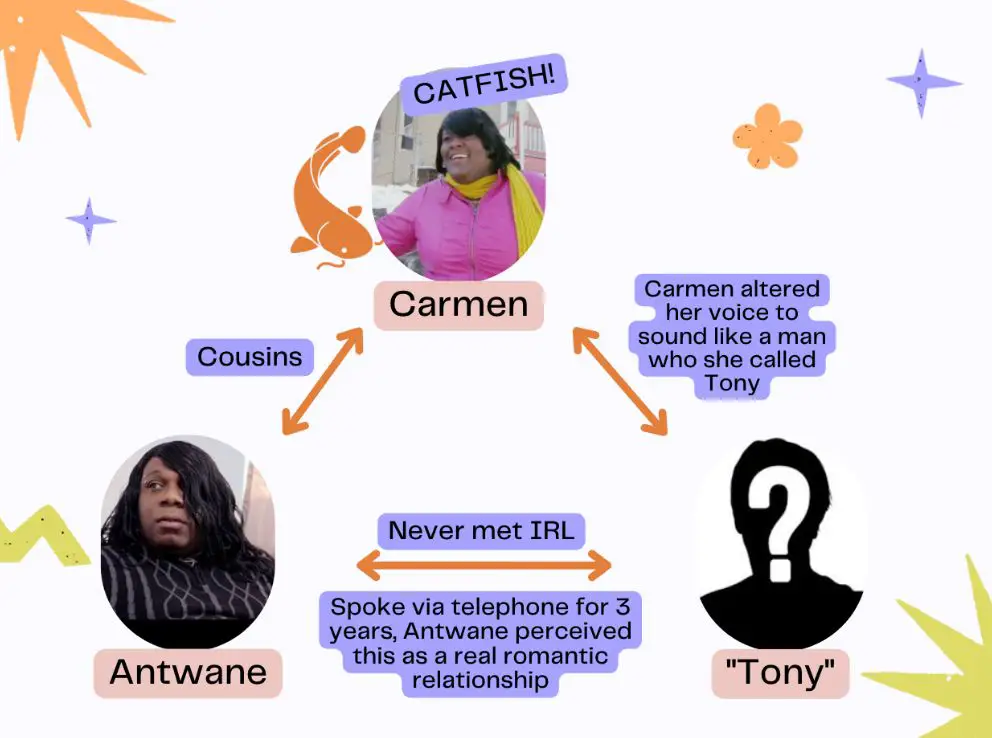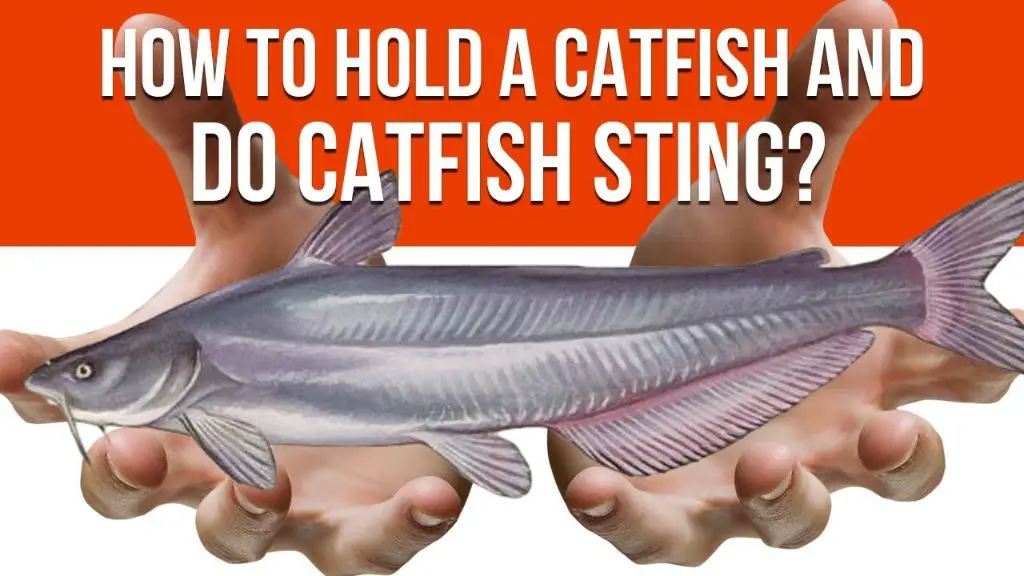What is Catfishing?
Catfishing refers to the practice of creating a fake online identity or persona and using it to deceive and manipulate others. The term catfishing was inspired by the 2010 documentary film Catfish, which followed a man who discovered the woman he fell in love with online fabricated her identity using someone else’s photos and profile information.
According to Wikipedia, catfishing typically involves malicious intent, such as romance scams or spreading misinformation. Catfishers make up elaborate fake identities and life stories using stolen photos and biographical details from unsuspecting victims. They then use these fraudulent online profiles to deceive people on social media, dating sites and other platforms.
Common motivations for catfishing include seeking attention and validation, living out fantasies, preying on vulnerable targets for financial gain or extortion, or simply enjoyment from manipulating others. Catfishers put considerable time and effort into fabricating their fake personas and carrying on deceitful online relationships for weeks, months or even years in some cases.
To carry out their deceptions, catfishers usually steal photos and details about hobbies, interests, jobs, location and more from real unsuspecting people’s online presences. They may even interact with targets using improvised details about “their life” to continue the charade and avoid getting caught. Overall, catfishing involves elaborate lies and manipulation all facilitated through a completely fabricated online identity.
Catfishing Prevalence
Catfishing is a surprisingly common occurrence, especially among younger internet users. According to https://legaljobs.io/blog/catfishing-statistics/, about 20,000 people are catfished per year in the US, with 41% of US adults reporting being a victim at some point. Additionally, 18% of internet users between 16-24 have experienced catfishing according to https://zipdo.co/statistics/social-media-catfish/. In terms of demographics, younger people are more likely to be victims. 62% of catfishing cases occur in the United States.
Catfishers themselves tend to be looking for entertainment, revenge, or a confidence boost. Their victims are often emotionally vulnerable people seeking relationships online. This allows the catfisher to take advantage of their trust and sympathies. Preventing catfishing requires vigilance, video chats, and confirming identities before growing attached.
Catfishing Motivations

Individuals engage in catfishing for a variety of motivations, often stemming from deeper psychological issues or a desire for connection.
Romantic deception is a common motivation for catfishing. Some catfish create fake online identities in order to pursue relationships under false pretenses. They may feel insecure about themselves or believe an altered persona is more desirable or likely to find love (Cybersmile).
Financial fraud is another driver of catfishing. Catfish may develop fake identities and relationships to manipulate people into sending them money or sharing financial and personal information. This fraudulent catfishing is illegal and unethical (USA Today).
Some individuals catfish purely for attention and ego boosts. They enjoy the deception itself and feeling desired or important. Psychological research found catfish tend to have high levels of psychopathy, sadism, and narcissism (The Conversation).
In rarer cases, catfishing is done with truly malicious intent, such as cyberbullying, stalking, or gathering information to blackmail or exploit someone. However, most catfishing stems from deeper personal issues or misguided attempts at connection.
Catfishing vs. Roleplaying/Fantasy Personas
While roleplaying and creating fantasy personas are harmless activities that many people enjoy online, catfishing crosses ethical lines by using deception to manipulate people. The key difference is that roleplaying involves mutual consent and understanding between participants that the personas involved are fictional. Both parties recognize the fantasy for what it is. With catfishing, the catfish intentionally misleads others by pretending to be someone they are not.
Roleplaying allows people to explore different identities and experiences in a safe, imaginary space. Both parties understand it is make-believe and agree to participate. In contrast, catfishing is non-consensual deception meant to elicit intimacy, financial gain, or other benefits from victims who believe the fake persona is real.
While roleplaying often occurs in designated forums or chatrooms with clear expectations, catfishing takes place covertly on social media, dating sites and other platforms where people expect honesty. The catfish violates this trust to manipulate unsuspecting victims. As Boo Ritson notes, this malicious deception is very different from fantasy roleplay between consenting participants.
In summary, the key distinction is that catfishing involves intentional lies and exploitation, while roleplaying is a harmless creative outlet based on mutual fantasy and consent.
Harm Caused by Catfishing

Catfishing can lead to significant emotional and psychological harm for victims. Those who discover they have been manipulated and lied to by someone they trusted and cared for often experience feelings of anger, sadness, embarrassment, and betrayal.
The trauma of catfishing can lead to anxiety, depression, trust issues, and withdrawal from relationships. Victims describe the experience as deeply violating and struggle to move past the damage done. Some require counseling and therapy to cope with the emotional fallout.
In addition to emotional damage, catfishing often results in wasted time, money, and effort spent cultivating a relationship with a fictional persona. Victims may have traveled to meet their catfisher or sent them money and gifts. They’ve invested emotionally in something that turned out to be a complete sham.
Being catfished can also harm someone’s reputation, especially if intimate photos or information were shared. The catfisher may spread lies or private details to further manipulate the victim. There is often a cloud of suspicion left behind, making it harder to trust people met online in the future.
Sources:
https://www.cybersmile.org/what-we-do/advice-help/catfishing
Catfishing and Criminal Fraud

Although catfishing itself is not illegal in most cases, it can cross the line into criminal fraud when used for financial gain or to impersonate someone.
A common example of criminal catfishing is when a catfisher initiates a romance scam, building an emotional relationship with a victim in order to manipulate them into sending money. According to the FTC, romance scams like this resulted in losses of $547 million in 2021 alone (https://www.ftc.gov/news-events/data-visualizations/romance-scams).
Catfishing can also become illegal if the catfisher uses someone else’s personal information or images to commit fraud, such as opening accounts or making purchases. This type of financial identity fraud is a serious crime that can result in criminal charges.
Finally, catfishing crosses into clearly illegal territory when it involves impersonating someone else online. If a catfisher pretends to actually be someone else, they could face charges of criminal impersonation, identity theft, or other related offenses depending on the specifics.
In summary, while basic catfishing between consenting adults is not itself illegal, catfishers who manipulate victims for financial gain or impersonate others without consent often do face criminal fraud charges if caught and prosecuted.
Catfishing and Impersonation Laws
While catfishing itself is not illegal, in some cases it can cross the line into criminal impersonation. According to California Penal Code 529, it is illegal to pretend to be someone else and act “in such assumed character” to fraudulently obtain money or other benefits. Criminal impersonation laws vary by state, but generally it is a crime to impersonate someone with criminal intent or to gain some type of benefit.
For example, in a California case, a man created a fake Facebook profile using photos of an attractive woman to convince another man to send him valuable sports memorabilia. He was charged with identity theft and obtaining money under false pretenses. The penalties if convicted of criminal impersonation can include fines or even jail time.
While benign catfishing likely does not rise to criminal impersonation, catfishers who use fake personas for fraudulent purposes like stealing money or identities can face prosecution. The laws treat identity theft and obtaining goods or services fraudulently as serious crimes with strict penalties.
Catfishing Minors
Catfishing takes on additional legal concerns when the targets are minors. Many states have laws against adults using deception to communicate with minors for illicit purposes. For example, in Texas it is illegal for an adult to use an online persona to contact a minor with the intent to commit certain illegal acts such as exposing themselves or soliciting explicit photos [1]. Many states have “child predator” laws that make it a felony for adults to use deception to solicit minors [2].
While the act of creating a fake persona is not necessarily illegal, doing so in order to target minors can quickly cross legal boundaries. Adults who pretend to be teens online in order to deceive minors into inappropriate relationships or conversations may face serious charges like child luring, child predation, or soliciting a minor. The intent behind the catfishing matters greatly in these situations.
Steps to Avoid Being Catfished
With catfishing so prevalent online, it’s important to take steps to avoid falling victim. Here are some tips:
Vet online identities thoroughly. Don’t take profiles at face value – ask questions, do reverse image searches on photos, and look for suspicious inconsistencies. According to security company Malwarebytes, suspicious signs include profiles with very few friends or photos, inconsistencies in personal details, unwillingness to video chat, and defensiveness when asked for verification. Visit sites like PCMag for steps to analyze photos and profiles.
Conduct reverse image searches on photos. Services like Google Images or TinEye can help detect if a photo is stolen from somewhere else online. According to Seers, this is one of the most effective ways to detect fake accounts.
Watch for suspicious behavior. According to Seers, other red flags include professing love too quickly, refusing to meet in person, making excuses, and asking for money. Go slowly and listen to your instincts if something feels “off” about an online admirer.

The most important first step if you discover you’ve been catfished is to cease all communication with the catfisher right away. They may try to keep you engaged through additional lies and manipulation.
What to Do If You’ve Been Catfished
If you have been victimized by a catfish, there are several constructive actions you can take:
Report catfishing accounts. Document evidence of the catfishing and submit reports to the platform or app where you were contacted. Provide screenshots and details to get their account revoked.
Share your story to raise awareness. Consider anonymously telling your story on websites about catfishing. This can help other potential victims recognize signs of catfishing behavior.
Seek legal recourse. If the catfisher stole money or committed other types of fraud, you may be able to take legal action. Consult with a lawyer about pursuing cybercrime or fraud charges.
The most critical step is cutting off contact completely with the catfisher. Seek support from friends and family during this difficult situation. Although catfishing can be extremely harmful, there are ways to take back control.

